Zyomatic, Inferior Nasal Conchae, Vomer, and Mandible bones
1/12
There's no tags or description
Looks like no tags are added yet.
Name | Mastery | Learn | Test | Matching | Spaced |
|---|
No study sessions yet.
13 Terms
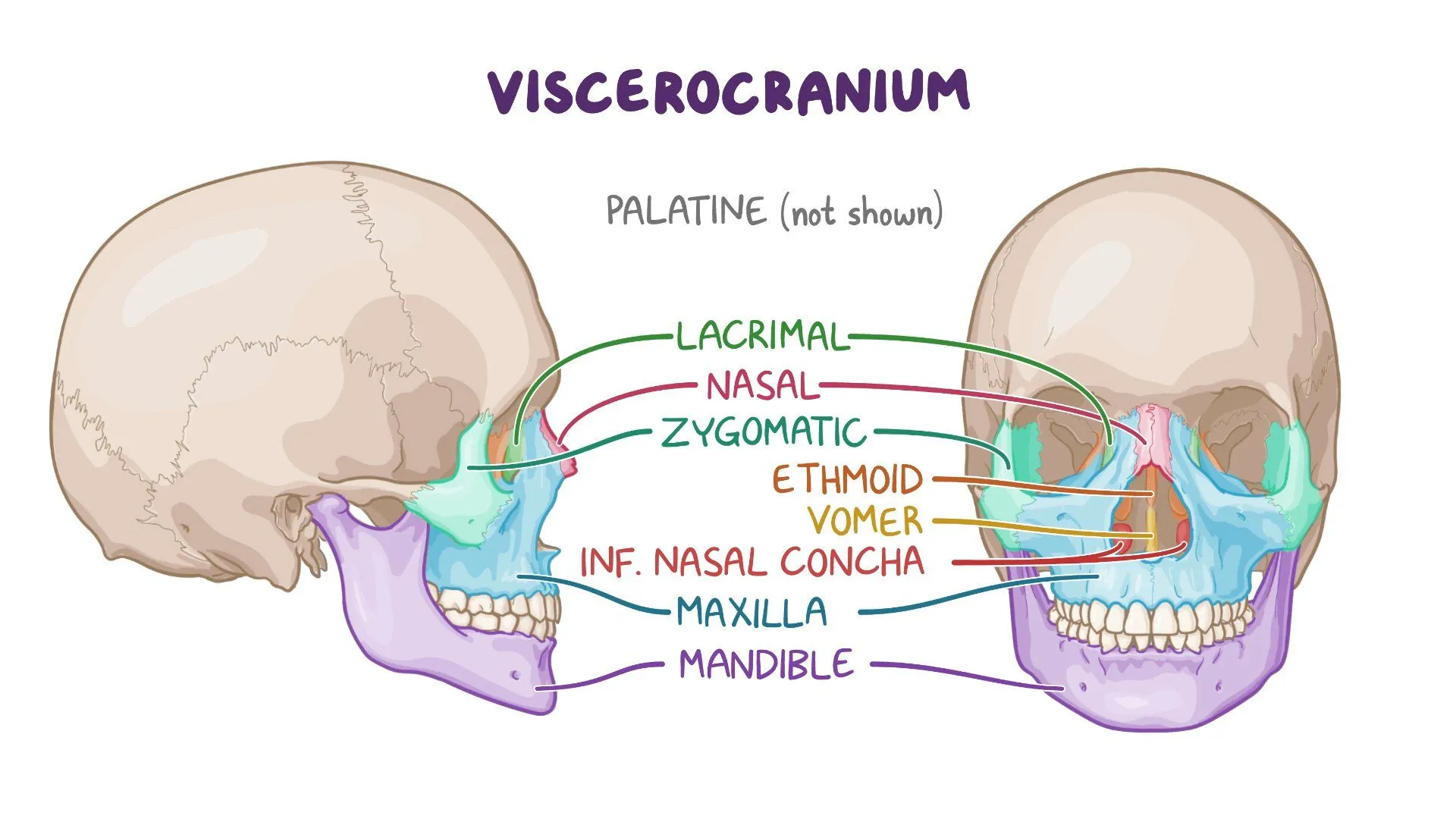
The zygoma or malar bone, creates the prominence of the cheeks, and contributes to the _
lateral portion of the bony orbit
The temporal process of the zygoma extends posteriorly to join with the zygomatic process of the _ to form the _
temporal bone; zygomatic arrch
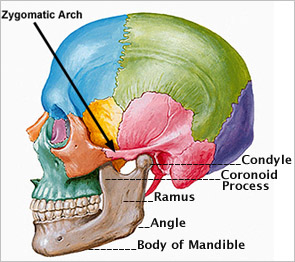
The_ project medially and inferiorly along the nasal cavity and are easily identified by their scroll-like appearance
inferior nasal conchae
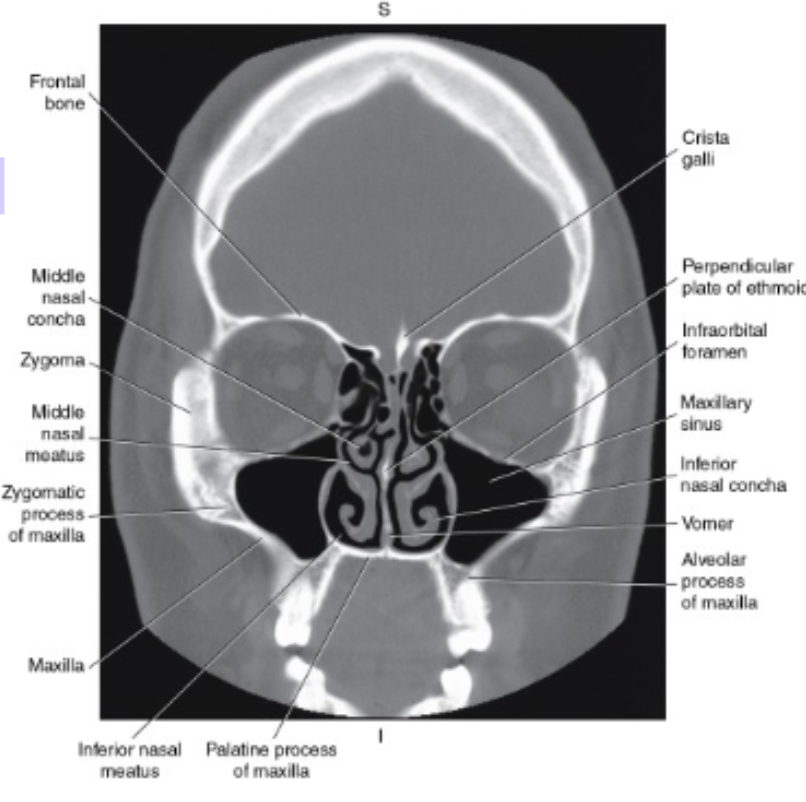
These conchae, along with the superior and middle nasal conchae of the ethmoid bone, divide the nasal cavity into
superior, middle, and inferior meati
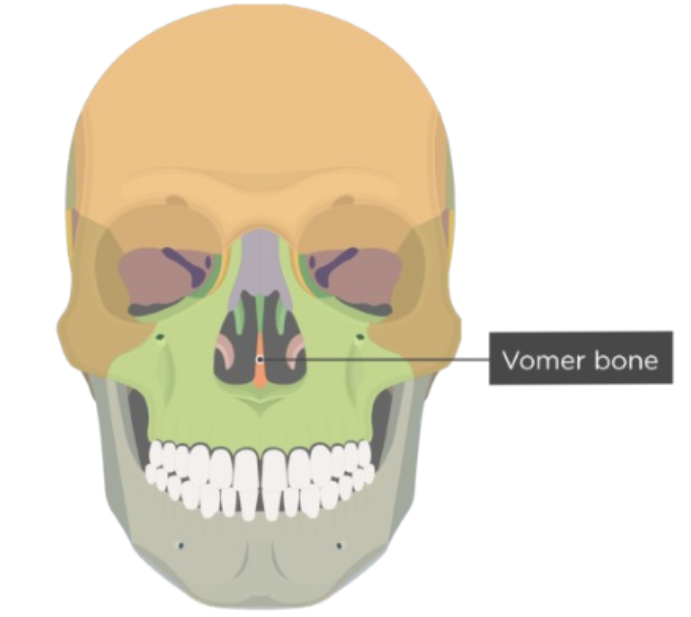
The vomer projects _ and form the _
superiorly from the base of the nasal cavity; inferior portion of the bony nasal septum

The largest facial bone is the _
mandible
The mandible has largely horizontal and vertical portions, and the junction of these points is termed the _
gonion
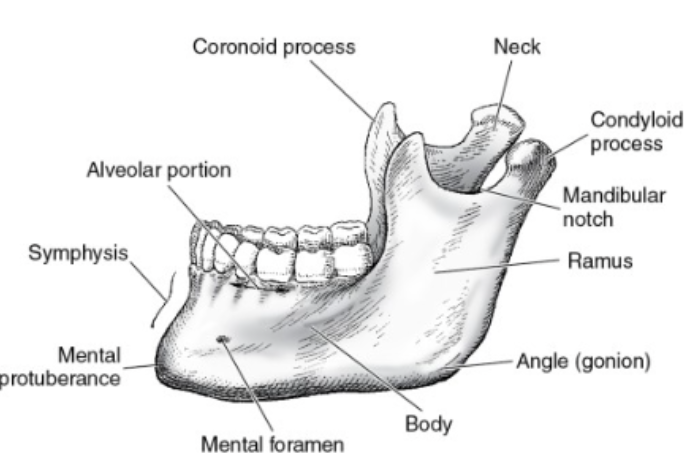
The curved horizontal portion, the mandible body, contains an _ similar to the maxilla
alveolar process
The verticle portion of the mandible is called the
ramus
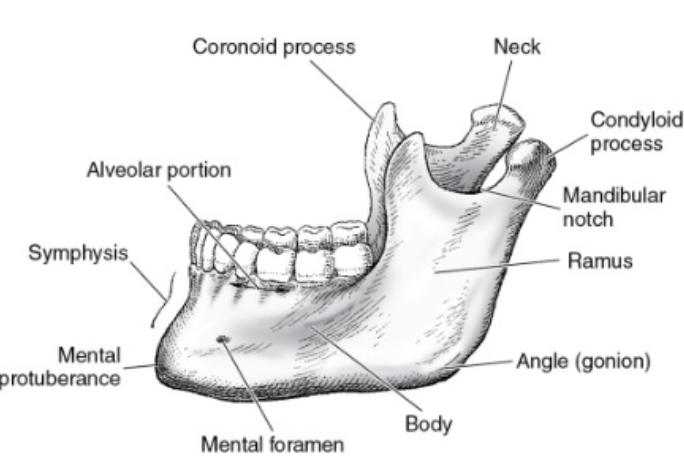
Each ramus has two processes at its superior portion:
The coronoid process
The condyloid process or condyle
The _ serves as an attachment site for the temporalis and masseter muscles
Coronoid process
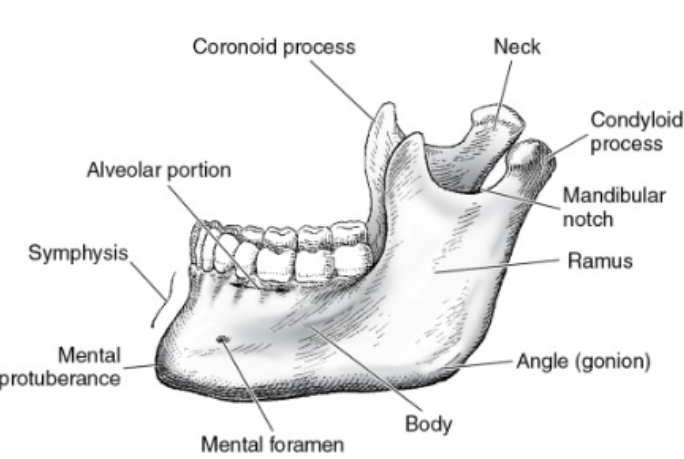
The _ articulates with the mandibular fossa of the temporal bone to form the temporomandibular joint
Condyloid process or condyle

The coronoid and condyloid/condyle processes are separated by a concave surface called the _
Mandibular notch
